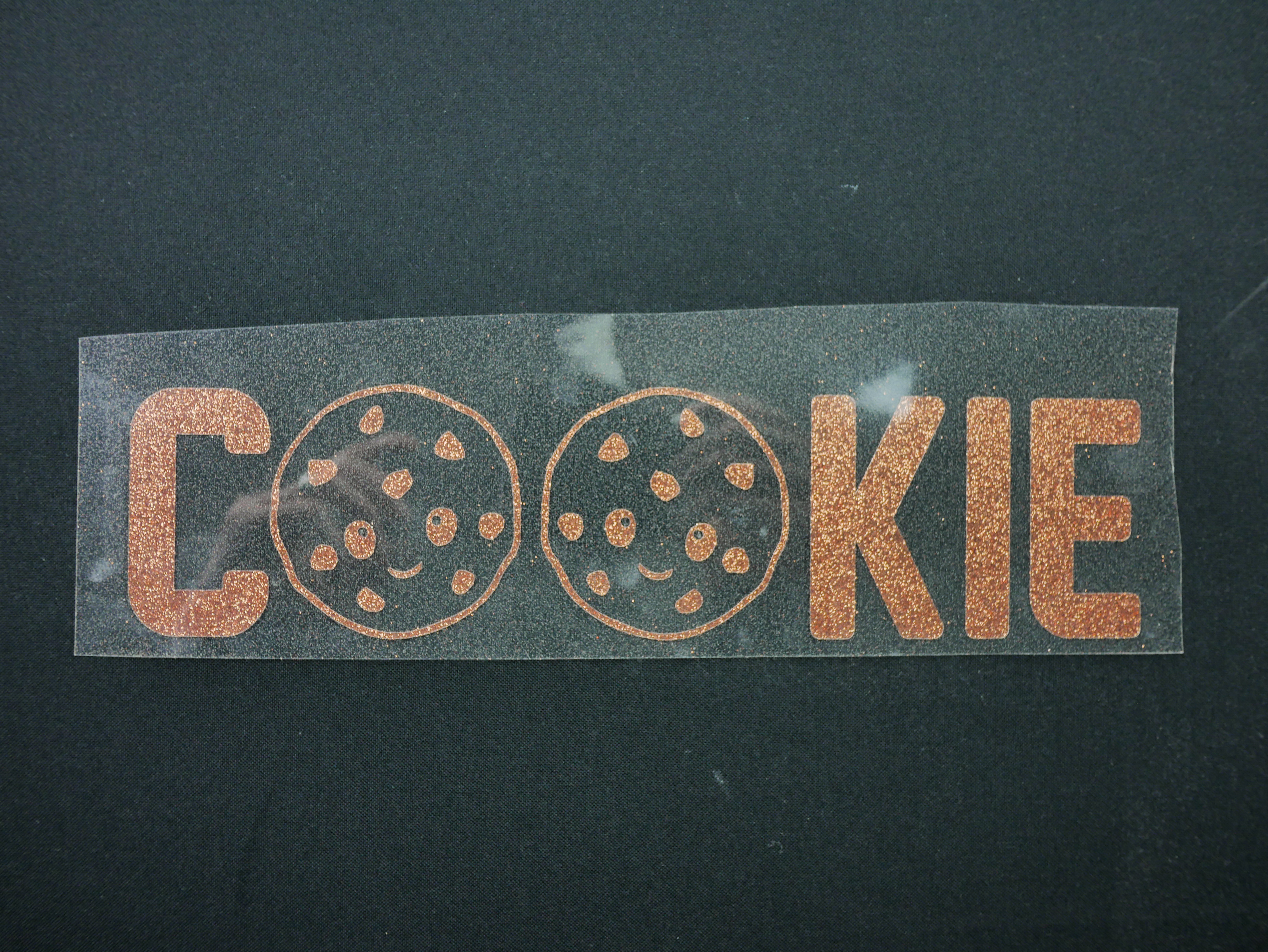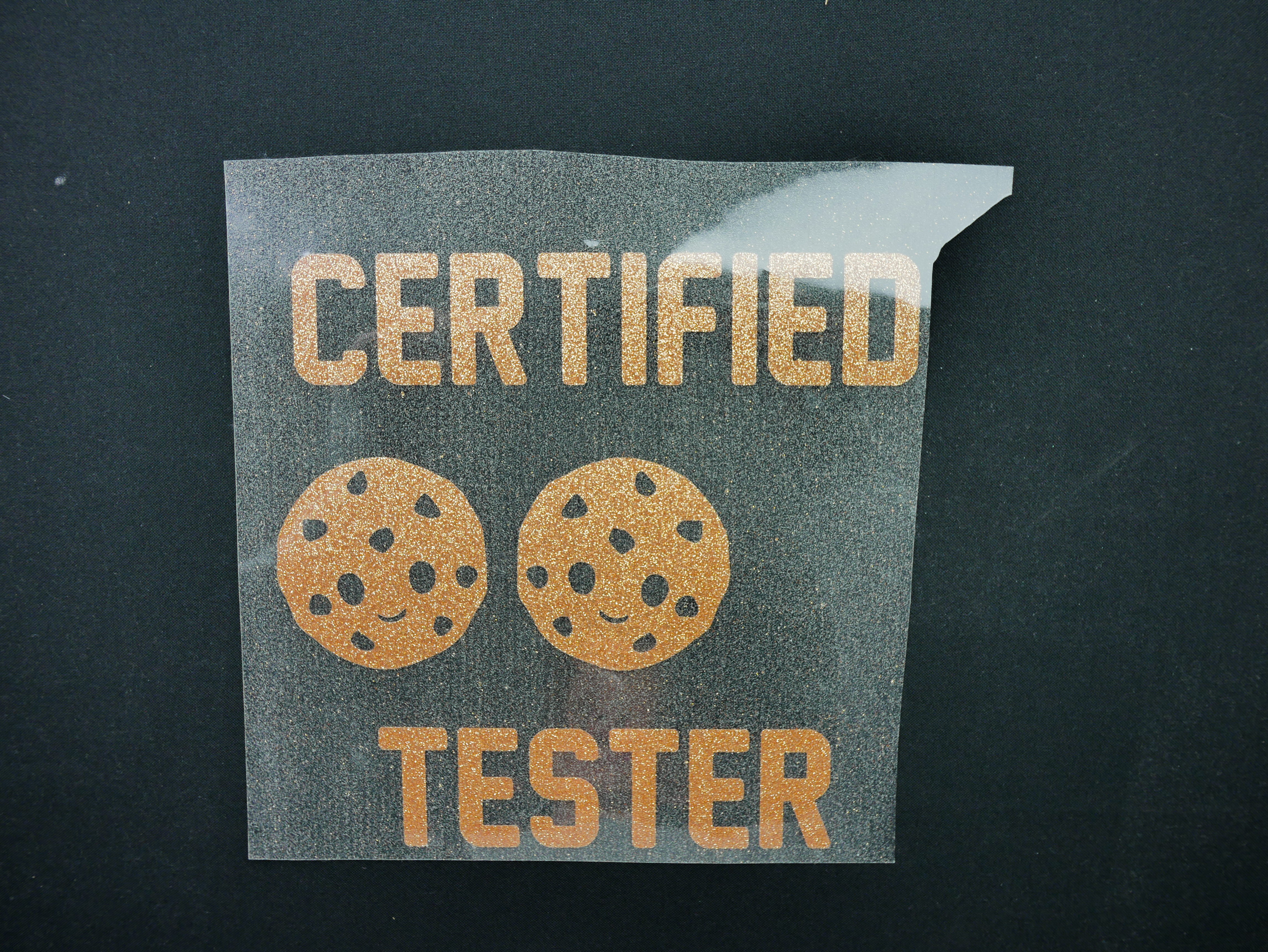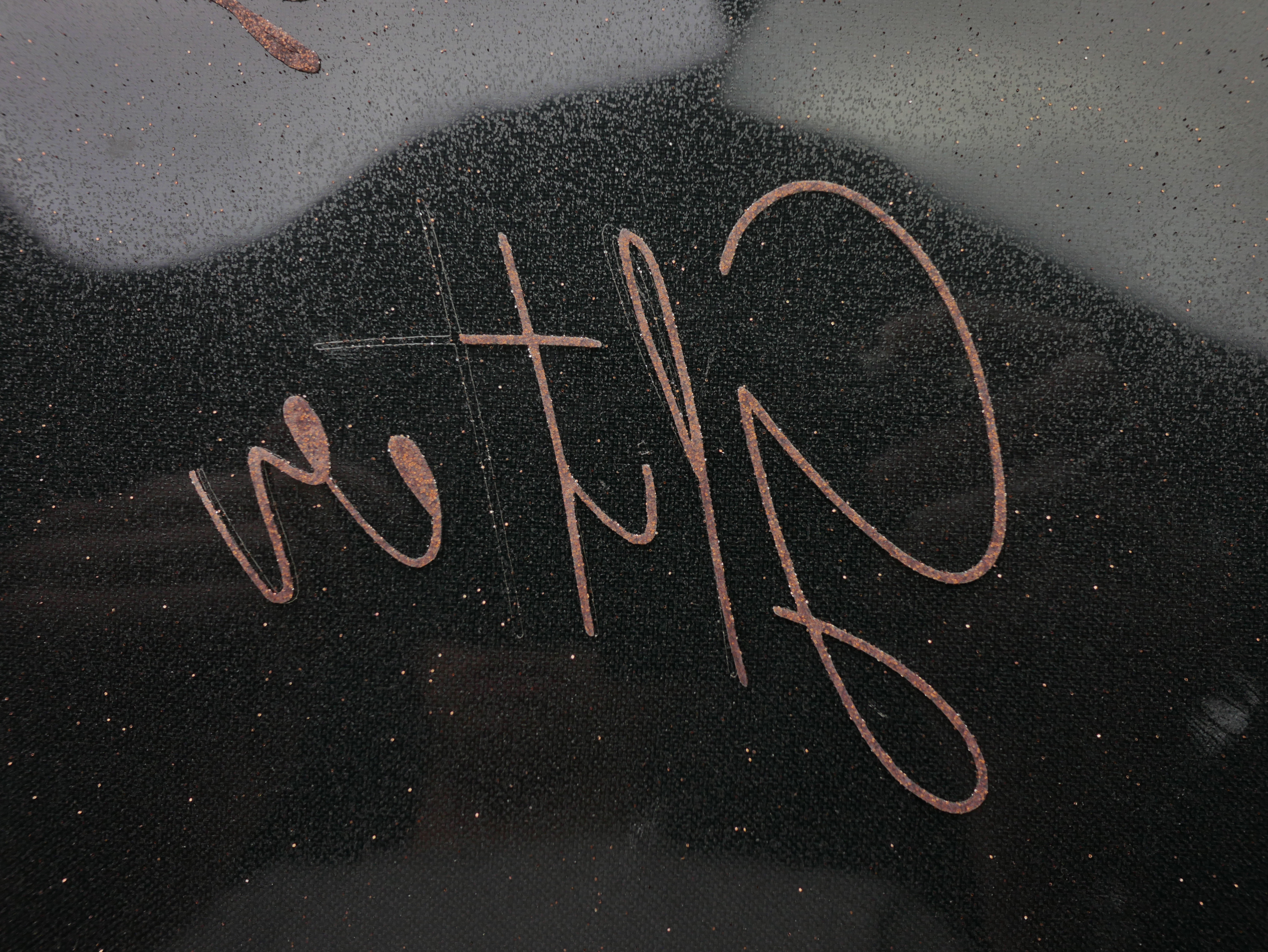Tip 1: Inlaying Glitter
What is an inlay and why do we do it?



An inlay design is done by cutting out (knockout or subtract) portions of one glitter vinyl, to then insert another glitter vinyl in those gaps. An inlay is necessary for textured glitter because the textured surface of the glitter does not provide a good base for the adhesive of the next glitter to stick to. You can learn more about how to inlay glitter by following the link below.
Tip 2: Detail

If you’ve never worked with glitter before this is crucial: small/intricate details are NOT recommended, this includes small cut outs and scrolling texts. Here’s why: first it’s 325-375 microns thick which is 3.5 times thicker than your normal EasyWeed or ThermoFlex Plus! Second, the way that glitter is manufactured makes this product very brittle which makes weeding difficult to begin with much less weeding a design with lots of intricate details.
Tip 3: Layering

If you are wanting to layer glitter, make sure it is the top layer only. The texture of glitter does not provide a good foundation for the adhesive of the top layer to adhere properly. If you’re wanting to use two colors of glitter, see Tip 1 regarding inlay designs.
Tip 4: Dye Sublimation

Did you know that you can dye sublimate onto white textured glitter? This is a great way to add a unique flair to your glitter designs that is all your own! For more on this, check out the link below.
Sublimating with HTV Textured Glitter
Tip 5: Always do a test cut
One of the most important things to remember when working with glitter is to always test cut. I cannot emphasize this enough! Regardless of how often you’ve worked with glitter, any time you go from one vinyl type to another, always do a test cut. A typical test cut involves cutting a small square (1cm wide) with an even smaller triangle cut within it. This will help you test speed and force (or pressure). This will allow you to really dial in your settings without wasting a large amount of vinyl.

